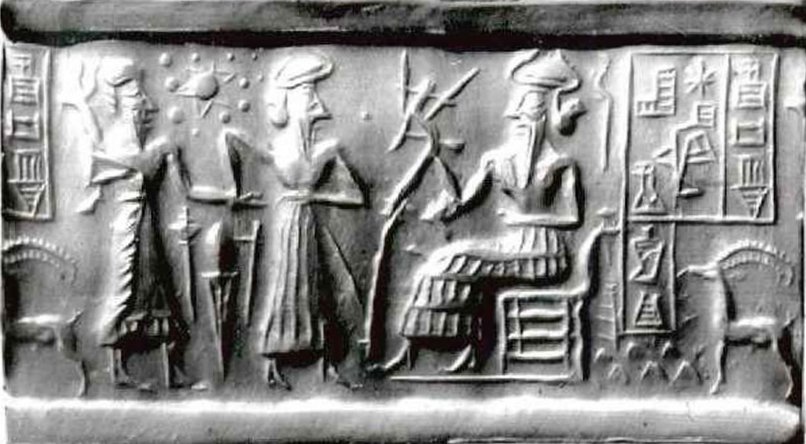This Ancient Sumerian Cylinder Seal Is Said To Depict 12 Planets In Our Solar System
There is an Ancient Sumerian Cylinder Seal, believed to be around 4,500 years old that curiously seems to depict our Sun and twelve planets within our Solar System, one of them supposedly being Nibiru, the elusive planet lurking somewhere on the outer edges of the Solar System.

One of the most controversial seals ever discovered and discussed among scholars is dubbed VA/243 and seems to depict – according to many — 12 planets within our Solar System with the Sun at its centre.
The Seal which dates back –at least- from the third millennium B.C. can be found at the State Museum in Easter Berlin and is catalogued as VA/243.
According to numerous researchers, this ancient Akkadian Cylinder Seal is one of the most ancient cylinders seals ever discovered and appears to be one of the most mysterious as well.
The reason? Well, it allegedly depicts the entire family of our Solar System and a rogue planet identified by authors such as Sitchin as Planet X, or Nibiru, the home planet of the Ancient Anunnaki.
Zecharia Sitchin discusses the cylinder seal in great detail in his book the 12th Planet.
According to Sitchin, the cylinder seal undoubtedly depicts our solar system with the numerous heavenly bodies and their relative size.
There are nine planets we know of today, – if of course you still think Pluto should be a planet and not a dwarf planet — our moon, the Sun, and a rogue planet commonly referred to as Nibiru.
If the mysterious objects depicted on the cylinder seal are in fact planets, how is it possible that the ancient Sumerians knew about our complete solar system in the 3rd millennium BC?
Not only that but how did they know their approximate size?
This leads to other questions like… where did the Sumerians obtain this knowledge from?
Did they develop it independently?
Or is it possible as many ancient cultures suggest, that some of that knowledge was passed on to them by ‘gods’ who came down from heaven and brought vast knowledge to man?
Does this ancient Sumerian Cylinder Seal depict the Solar System with all of its planets including Nibiru as Sitchin indicates?
Or is it possible that authors such as Michael S. Heiser are correct, and that the cylinder seal does not have any astronomical value and DOES NOT depict our solar system, planets, the moon, or the sun?
There are other questions that must be raised when looking at the cylinder seal. For example, would a cylinder seal be the ‘appropriate’ medium by which someone — 4,5000 years ago — would transmit such important astronomical knowledge?





